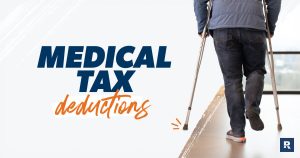After leaving a job where they contributed to a 401(k), retirement savers typically have four choices about what to do with the funds in the plan. They can roll the funds into an employer-sponsored retirement savings plan at a new job, rollover into an IRA, leave the funds where they are or cash out the account. Of these options, performing a rollover into a new 401(k) or similar plan generally is what retirement planners recommend. This minimizes taxes and is often the preferable choice for most people. Opening a new IRA may add costs and complexity and leaving funds where they are isn’t always possible. Cashing out is the selection least likely to improve a saver’s long-term financial picture. If you’re considering what to do with retirement funds, talk it over with a financial advisor.
401(k) Plan Options
A 401(k) plan is a popular method of saving for retirement. It offers tax deductions for contributions, tax-free growth and the potential for employer matches. But when someone leaves a job, their 401(k) stays, unless they take action to do something else with the money. Here are the different ways this can go:
- Leave the funds in the former employer’s 401(k). This is the easiest choice and requires no action on the part of the saver. Much will remain the same. Earnings will continue to accumulate tax-free and, as before, the saver can modify the way funds are invested. However, inaction may not be the best move. Some employers charge higher plan fees to ex-employees. In all cases, an ex-employee is no longer able to contribute to the 401(k). And, if the worker opens a new 401(k) at a new employer, it can add to the paperwork and complexity of overseeing their retirement savings.
- Direct transfer into a new 401(k). When the worker starts a new job that has a 401(k), they can rollover the money from the former employer’s plan into the new one. This is often the best move. A direct transfer is also easy. It starts by notifying the former plan’s administrator to transfer to the new plan and requires only a few additional steps. A direct transfer ensures the money will continue to grow tax-free, simplifies recordkeeping by consolidating 401(k) accounts and avoids the risk of taxes and penalties. However, some employers may not allow direct transfers from old 401(k)s, so it’s not always possible to do this.
- Rollover into an IRA. Another option is to rollover the funds into a new or existing IRA. This may be the best choice is a new job has no employer-sponsored retirement plan. IRAs can also offer additional investment choices and lower fees. The switch can be done by direct transfer. The direct approach avoids taxes and penalties and keeps the money growing tax-free. Moving money to an IRA means foregoing any employer matches, if they are available, so a 401(k) is usually a better choice if available. IRAs may in some cases have higher fees and require more investment knowledge as well. A possible wrinkle is converting the 401(k) funds into a Roth IRA. This can involve a large upfront tax bill but preserves tax-free growth and also allows for tax-free withdrawals as well as exempting the account from Required Minimum Distribution (RMD) rules.
- Cash out. A saver may opt to cash out the 401(k) balance and receive a check for the amount in the account. This can be an expensive choice, since an early withdrawal from a tax-advantaged account before age 59.5 is treated as ordinary income subject to income taxes and is also subject to penalties. A plan administrator will automatically withhold 20% of the distributed amount to pay any taxes due. If the check is rolled over by being deposited into an IRA within 60 days, this avoids the penalty as well as the taxes. However, because of the possibility of going over the time limit, this is usually not the best method of funding an IRA. Unless the money is required for an urgent financial need, the costs of cashing out generally make it the least attractive option.
Bottom Line
Direct transfer of a 401(k) balance from a former employer to a new employer’s retirement plan is often the most financial advantageous choice. It allows for tax-free growth, minimizes taxes and fees and also permits employer matching of contributions if the plan has that feature. Directly transferring to an IRA is also an attractive option, since it preserves tax-free growth and may provide more investment options. Leaving the money in the old 401(k) may not work as well, due to the possibility of higher fees and limitations that can be placed on the account by a former employer. Least attractive, in most cases, is cashing out the 401(k), since this potentially exposes a saver to costly taxes and fees.
Tips
- Deciding how to handle a 401(k) from a former employer is likely to be easier with the insight and experience of a financial advisor. Finding a financial advisor doesn’t have to be hard. SmartAsset’s free tool matches you with up to three financial advisors in your area, and you can interview your advisor matches at no cost to decide which one is right for you. If you’re ready to find an advisor who can help you achieve your financial goals, get started now.
- Want to know what your 401(k) will be worth down the line? SmartAsset’s 401(k) Calculator uses your income, age, planned retirement age, estimated annual investment returns and other datapoints to estimate your annual income in retirement.
- Keep an emergency fund on hand in case you run into unexpected expenses. An emergency fund should be liquid — in an account that isn’t at risk of significant fluctuation like the stock market. The tradeoff is that the value of liquid cash can be eroded by inflation. But a high-interest account allows you to earn compound interest. Compare savings accounts from these banks.
Photo credit: ©iStock.com/baona
Read the full article here
















